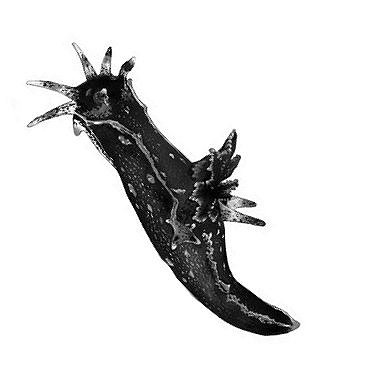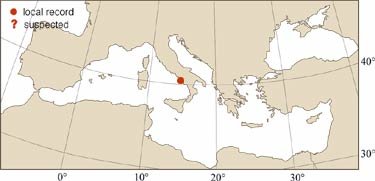
|
Relevant Synonyms
Misidentification
|
|
| drawing: Tuvia Kurz |
|
SHORT
DESCRIPTION
color :
general body color translucent whitish-grey densely peppered with black greyish dots, giving the animal an overall grey-black appearance. Papillae translucent white with a yellow-gold ring towards the centre. Tip of the tail also gold. White pigmentation forms irregular white lines on the edges of the notum and along the mid dorsal line of the foot.
common size :
10-20 mm, max. 40 mm. |
DISTINGUISHING CHARACTERISTICS
BIOLOGY / ECOLOGY
habitat :
on the branching bryozoans Bugula neritina 0-1 m deep in lagoonal environments, together with typical fouling organisms, such as the ascidian Ciona intestinalis. |
|
1st
Mediterranean record
|

|
|
DISTRIBUTION
|
ESTABLISHMENT SUCCESS
speculated reasons for success :
|
|
|
MODE OF
INTRODUCTION |
IMPORTANCE TO
HUMANS |
|
KEY
REFERENCES
|
|
|
 Polycera grupa Marcus and Marcus, 1967
Polycera grupa Marcus and Marcus, 1967